With air-to-air missiles, Ukraine will have air superiority? Cao Weidong: On the battlefield between Russia and Ukraine, its role is limited.
The Japanese government recently said that it has initially decided to develop domestic air-to-air missiles, which will be equipped on the next-generation fighters jointly developed with Britain and Italy. Japan and Britain decided to jointly develop new air-to-air missiles many years ago. Now why did Japan change its mind and announce independent research and development? The US Air Force has demonstrated the "variant" air-to-air missile under development for the first time. What is the "unique skill" of the so-called "variant" missile? The recent decision of the United States to provide Ukraine with advanced air-to-air missiles has caused an uproar. To what extent can these American-made air-to-air missiles affect the current battlefield situation in Russia and Ukraine?
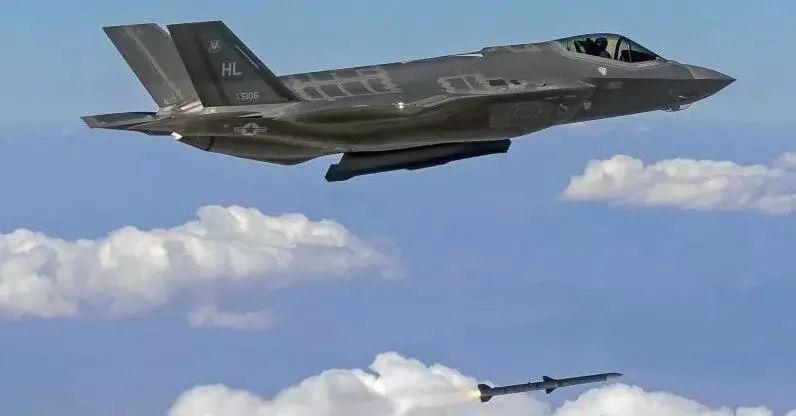
Data Map: An F-35A launched an AIM-120 air-to-air missile during the exercise (source: reference news).
Japan’s self-developed air-to-air missile
Air-to-air missile is the core equipment to gain air superiority, and its performance has a decisive influence on the outcome of air combat. Japanese media recently reported that the Japanese government has initially decided to develop domestic air-to-air missiles around the next generation of fighters jointly developed with Britain and Italy. Japan planned to jointly develop air-to-air missiles with Britain many years ago. Why should it announce its own development now?
Cao Weidong: In the early days, Japan independently developed a short-range air-to-air missile, but because it was too large to match the stealth fighter, it bought the AIM-120 air-to-air missile from the United States. However, the United States has a high level of technical secrecy and the price of missiles is very expensive, which is not the best choice for Japan. Therefore, Japan and Britain signed an agreement to jointly develop advanced air-to-air missiles. Japan recently announced that it would develop air-to-air missiles by itself, which may be a contradiction in the process of cooperation with Britain. For example, how to share the research and development funds, and who will tackle the key problems in which technologies.
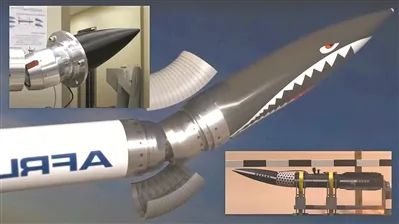
Data Map: The concept map of the next-generation missile "with the front part of the rapidly rotating missile body" announced by the US Air Force (Source: China National Defense News)
The United States "mutated" air-to-air missiles
The US Air Force Research Laboratory demonstrated the "variant" air-to-air missile under development for the first time at the 2023 War Seminar of the Air Force and Space Forces Association. It is said that the warhead of this "variant" air-to-air missile can realize large-angle steering. What effect does this have on actual combat?
Cao Weidong: Air-to-air missiles are usually launched from the back of the opposing plane, and the plane in front will give an alarm to the pilot when it finds a missile coming from behind. As we all know, the speed of the plane is lower than that of the missile, so when the plane turns sharply, the missile may rush past because of its too fast speed. This so-called "mutant" missile of the United States can solve this problem. When the plane turns sharply, the missile can also slow down at the same time, realize a large angle turn, continue to track the target and attack the target.
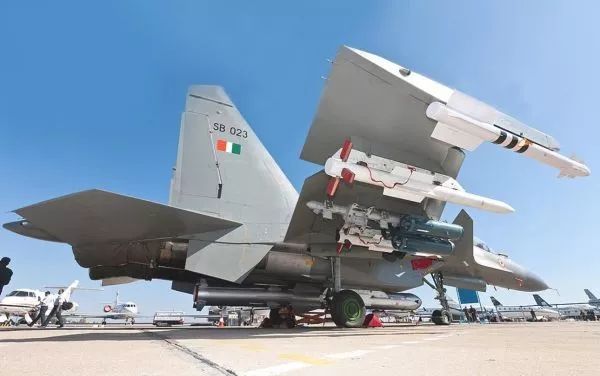
Data map: Indian Su -30MKI fighter with Russian-made R-77 and R-73 missiles (source: reference news)
Air-to-air missiles are not Russian strengths.
Previously, the development of air-to-air missiles in the Soviet Union has been lagging behind that in the United States. Both the short-range air-to-air missile R-73 and the long-range air-to-air missile R-77 are inferior in comprehensive performance to the American AIM-9 "Rattlesnake" and AIM-120 series, which have been continuously improved. According to your observation, is there any breakthrough in the performance of Russian air-to-air missiles today?
Cao Weidong: Actually, Russia’s air-to-air missiles have never surpassed the United States in performance. The focus of Russian missile research and development is on hypersonic missiles. As far as the competition between planes for air supremacy is concerned, what Russia highlights is not how advanced air-to-air missiles are, but the advanced performance of aircraft. For example, the Su -35 aircraft focuses on improving the radar, which can be found and attacked by the enemy first, and the bomb load is relatively large. If it is an air-to-air missile, at least seven or eight pieces can be mounted, and the aircraft itself has better maneuverability, so Russia makes up for the shortage of air-to-air missiles by improving the performance of the aircraft.
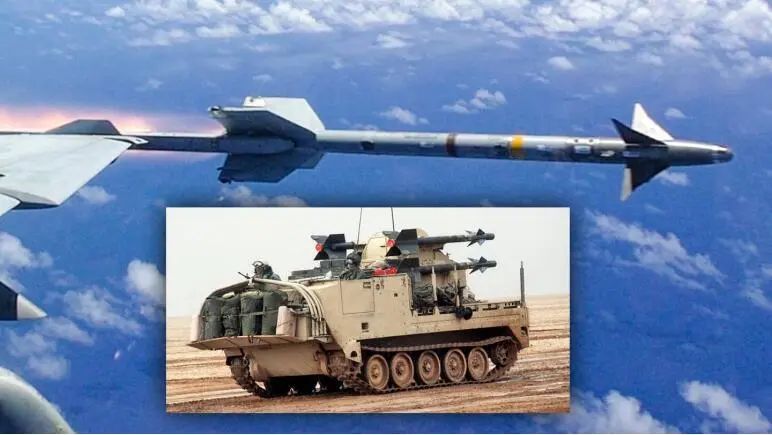
Data Map: AIM-9M Diamondback missile can be launched from the air or the ground (Source: World Wide Web)
On the battlefield between Russia and Ukraine
Air-to-air missiles have limited functions.
It is reported that AIM-9M "Sidewinder" air-to-air missile appeared for the first time in the list of military aid to Ukraine announced by the United States at the end of August. In addition, the United States also said some time ago that it would deliver more than 100 AIM-120 medium-range air-to-air missiles to Ukraine. How much can these American-made air-to-air missiles play in changing the battlefield situation in Russia and Ukraine?
Cao Weidong: The number of manned combat aircraft in Ukraine is relatively small. At present, Russia still holds the air superiority in the conflict between Russia and Ukraine. The air-to-air missiles provided by the United States to Ukraine are mainly for the F-16 fighters or Gryphon fighters provided by the United States and NATO to Ukraine in the future. Now even if Ukraine is given more advanced missiles, Ukraine can’t give full play to its role. Is there an early warning aircraft to help indicate the target? Are there any other missiles to help maintain the security of airspace? These problems will become the key to the air supremacy. Occasionally mounting such advanced missiles will not play much role in the air supremacy, and its role in the current Russian-Ukrainian battlefield is very limited.
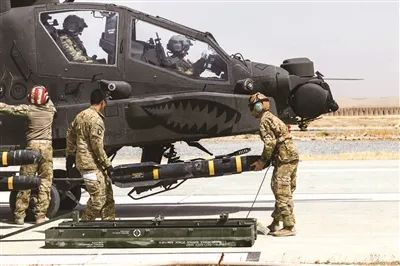
Data Map: US soldiers loaded Hellfire air-to-surface missiles on AH-64 Apache helicopter (Source: China Defense News)
Future development of air-to-air missiles
For the future development trend of air-to-air missiles, some analysts believe that the focus will be on two directions: first, the size and weight of the missile body will be greatly reduced while maintaining the existing range; Another development trend is to greatly increase the range while maintaining the size and weight of the existing projectile. What key factors do you think will be covered in the future development of air-to-air missiles? How will air-to-air missiles become operational multipliers and winning magic weapons in the future high confrontation environment?
Cao Weidong: Air-to-air missiles are mounted on airplanes, which affects the flexibility and range of airplanes to some extent. In the future, air-to-air missiles should have a long range and be able to strike each other outside the defense zone. The second is high precision, making a fuss about intelligence and letting the missile search for the target by itself. The third is to pay attention to the development of stealth, such as using composite materials or stealth materials to improve penetration ability.
(Yang Guangwang Military Channel reporter: Hu Wei)